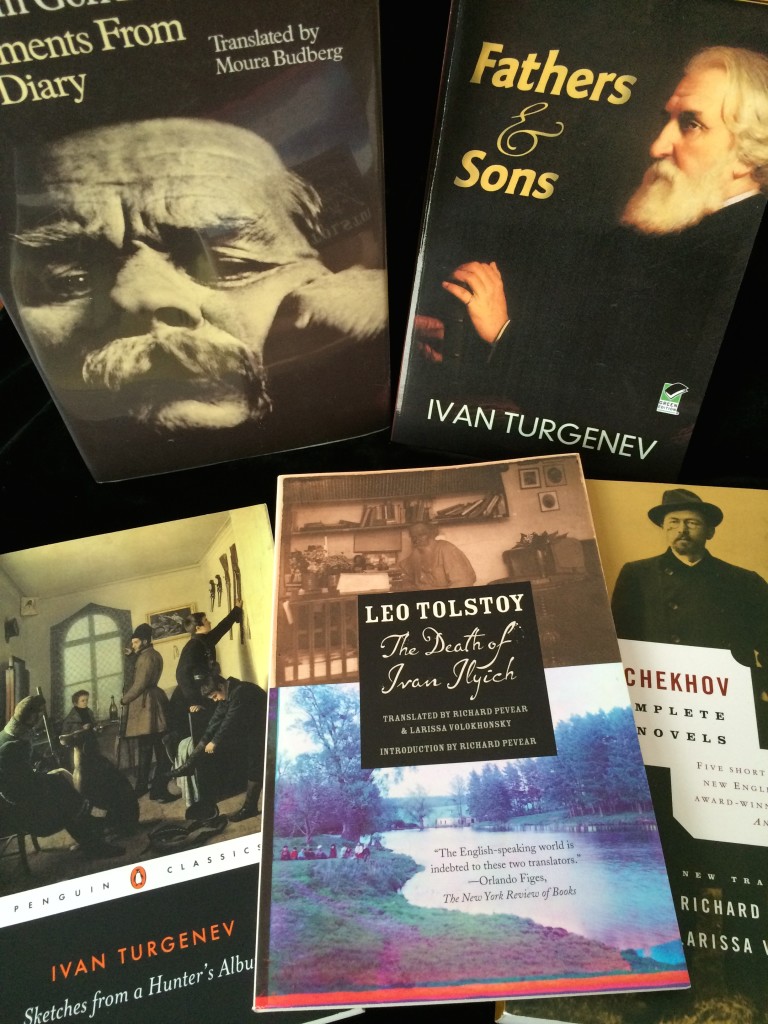 As part of our celebration of “all things Russia” for Valentine’s Day, be sure to read our post in Rose’s Ridge, “From Russia With Love,” and try our recipes of Russian dishes from Around The Table. Also learn some interesting facts and view beautiful pictures here.
As part of our celebration of “all things Russia” for Valentine’s Day, be sure to read our post in Rose’s Ridge, “From Russia With Love,” and try our recipes of Russian dishes from Around The Table. Also learn some interesting facts and view beautiful pictures here.
“What makes the 19th century Russian writers so distinctive” writes Francine Prose in New York Times’ ‘Bookends’ from November 25, 2014, “is the force, the directness, the honesty and accuracy with which they depicted the most essential aspects of human experience – childbirth, childhood, death, first love, marriage, happiness, loneliness, betrayal, poverty, wealth, war and peace…”
Born to a prominent family in the Russian nobility, Leo Tolstoy (1828-1910) was regarded as a “virtually untouchable genius” whose two great works, War and Peace (1865-1869) and Anna Karenina (1875-1877) “combine unprecedented depth of characterization and keenness of observation with a profound interest in the philosophical underpinnings of everyday life.”*
War and Peace is a large, vastly complex book with a scope that is “as wide as Russia itself”, culminating in France’s invasion of Russia in 1812.
Charles Van Doren, in his book, The Joy of Reading, offers suggestions as to how to read this “great masterpiece.” First and foremost he suggests to just “let the book happen to you” and not try to control it. War and Peace has a huge cast of characters that can become overwhelming and confusing. His advice is to not spend too much time on trying to keep track of who is who but rather stay on a steady reading course with this hefty book and it will work itself out. He does mention that the best scenario for reading this book is to devote an entire week to reading it straight through. It is the total immersion into a book, especially the great masterpieces, that allow one to truly enter into and experience its world.
Anna Karenina, Tolstoy’s other great masterpiece – considered one of the greatest love stories with one of the most beloved characters in fiction, Anna – begins with an opening line that draws one in with a blunt force: “All happy families are alike; each unhappy family is unhappy in its own way.”
As the reader “finds their way” through this great story, one discovers that there is much more than just a simple love story that Tolstoy has told. As Joshua Rothman writes in his article in the New Yorker (Nov. 2012), “what interested Tolstoy wasn’t love, per se, but its extreme consequences…love can be a curse as well as a blessing.” He goes on to say that Anna Karenina is different from other love stories because Tolstoy was “thinking about love in a different way: as a kind of fate, or curse, or judgment, and as a vector by which the universe distributes happiness and unhappiness, unfairly and apparently at random.”
Rothman, a teacher of the novel, explains that Tolstoy believed that “we make choices and that our sense of free will is based on something real.” But he also has a deep respect for the complexity and power of our circumstances, and he considers our personalities and psychologies to be “circumstances” too.
Stay tuned later this week for a review of Helen Rappaport’s recent work, The Romanov Sisters (2014), a New York Times bestseller for 12 weeks!
For a list of “10 Russian Novels to Read Before You Die”, see this post by Off the Shelf.
*Please note that all quotes are taken from The Intellectual Devotional by David S. Kidder & Noah D. Oppenheim, and The Joy of Reading by Charles Van Doren.

Oh I love Anna Karenina… I believe I may have received it as a Christmas gift from the author 🙂
Great recommendation on how to digest and enjoy War and Peace. Can’t force it, and must let it happen.